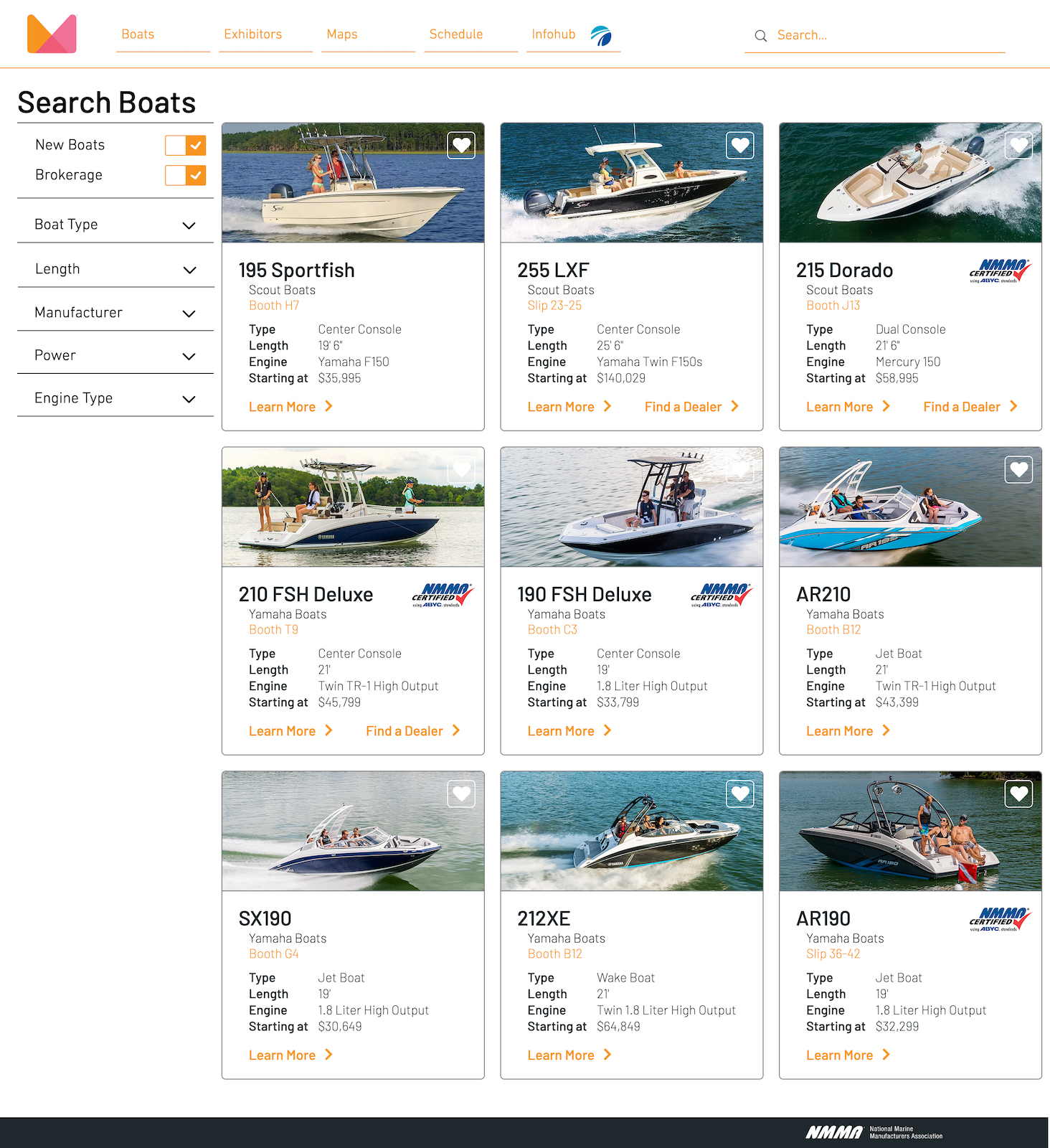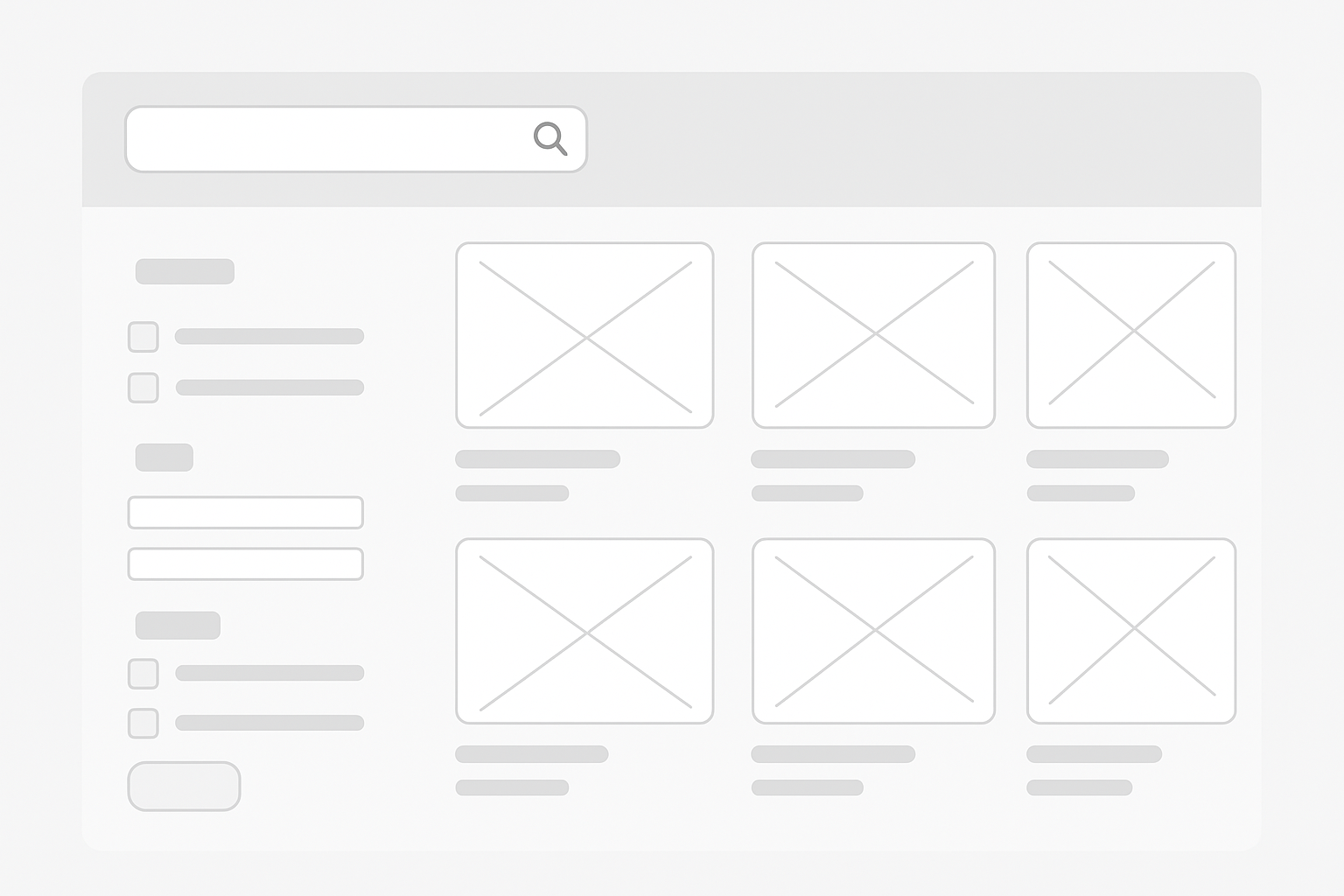

When the Palm Beach Boat Show shifted to a virtual format, the team needed a way for attendees to explore boats online in a way that felt engaging and intuitive. I was responsible for designing the search and filtering interface that would allow users to browse hundreds of listings.
I set out to create a search experience that felt consistent with the show’s existing brand guidelines while remaining simple and intuitive for attendees. This meant designing an interface that aligned visually with the larger event identity—clean typography, a structured grid, and a clear hierarchy of information—while also ensuring that interactions like searching, filtering, and browsing felt intuitive. My goal was to strike the right balance between visual polish and functional clarity, so that whether a visitor was casually browsing or searching with specific criteria in mind, the experience would feel seamless and inviting.
Since no two visitors would search the same way, I began by focusing on core user needs:
To address these needs, I designed a two-panel layout:
I also introduced formatting rules to keep results looking uniform—for example, standardizing units and ensuring each listing highlighted the most relevant details first.

The final design delivered:
The result was a streamlined interface that balanced functionality and visual clarity, allowing users to explore boats as if they were “walking the docks” at a physical show.
The solution enabled visitors to navigate hundreds of listings smoothly, making the virtual experience feel engaging and approachable. By prioritizing clarity and consistency, the show recreated much of the excitement of in-person browsing in a digital environment.
On a personal level, this project reinforced the importance of designing systems that adapt gracefully to real-world data. I gained valuable experience in creating interfaces that are both flexible and user-friendly.